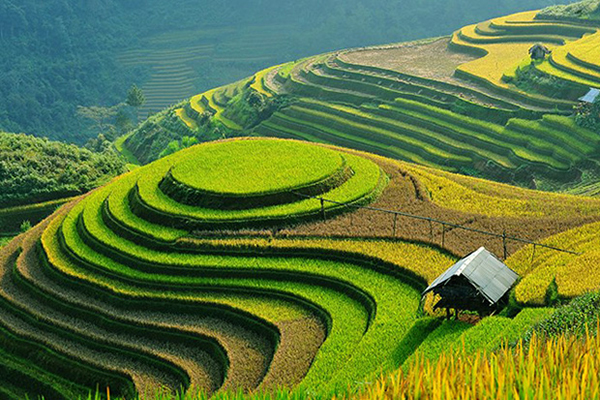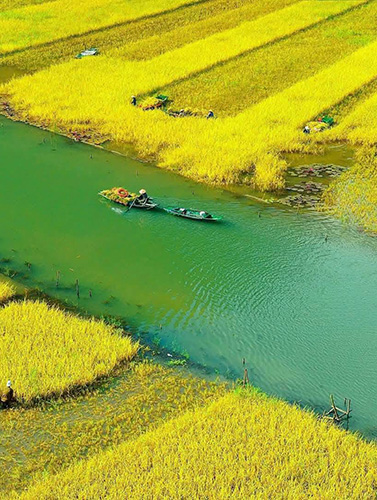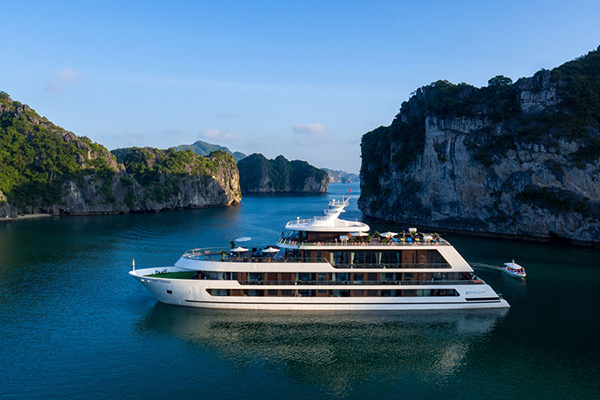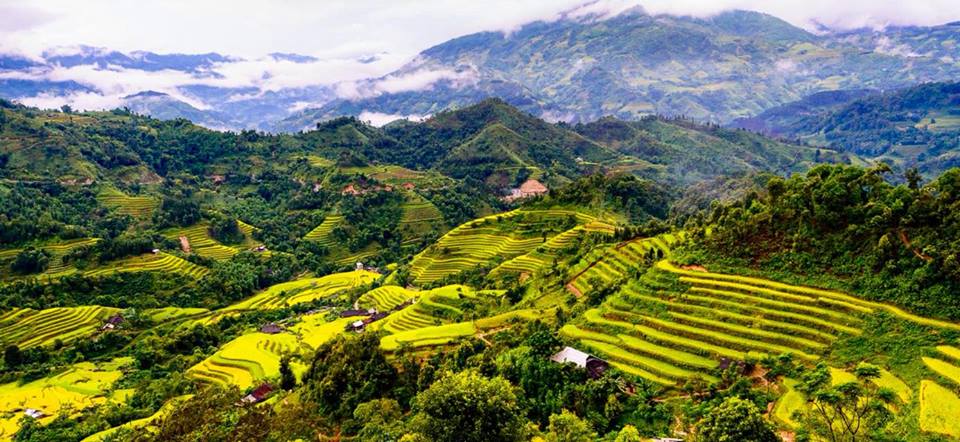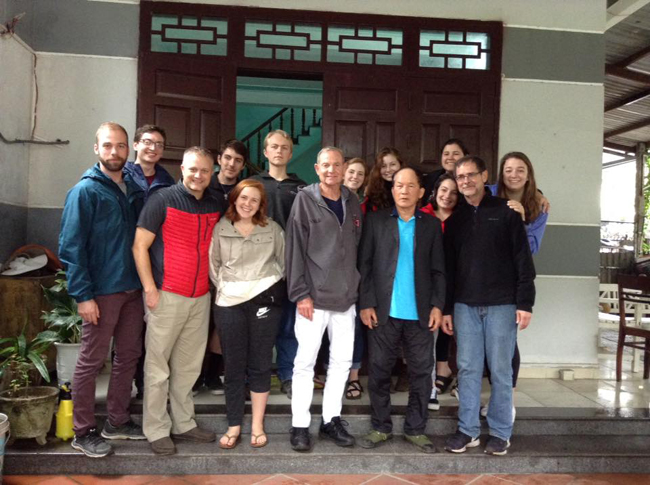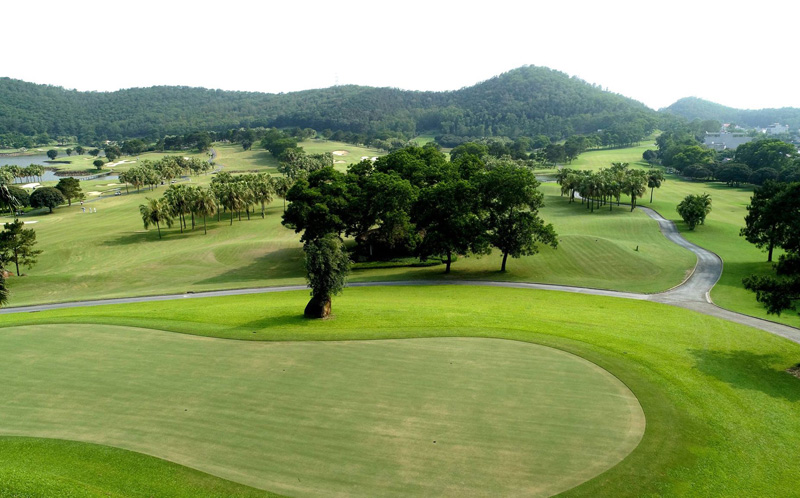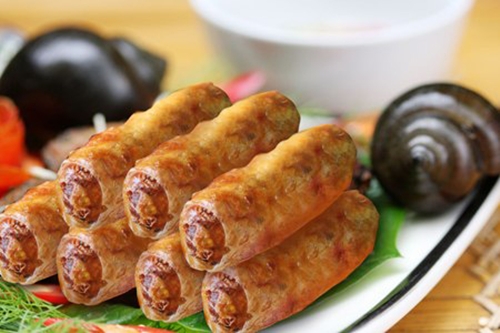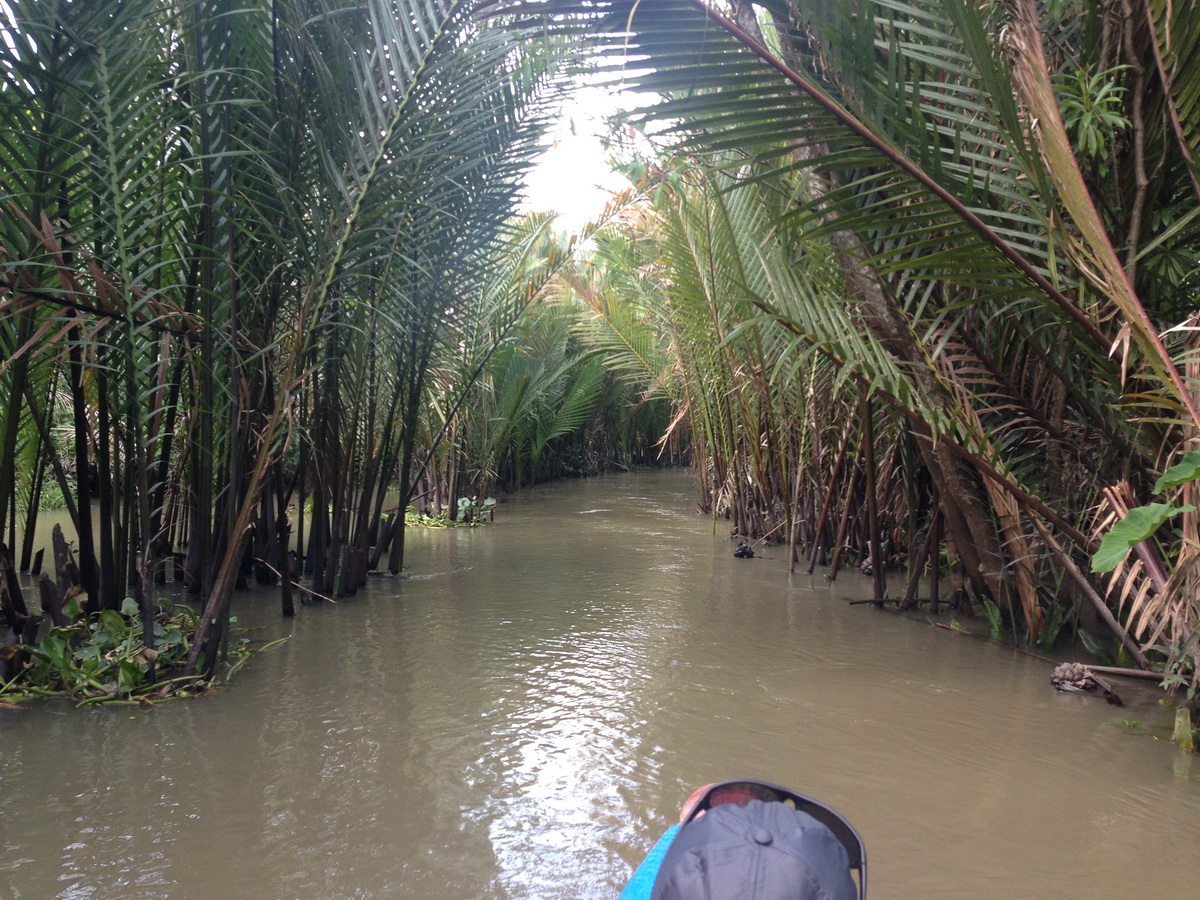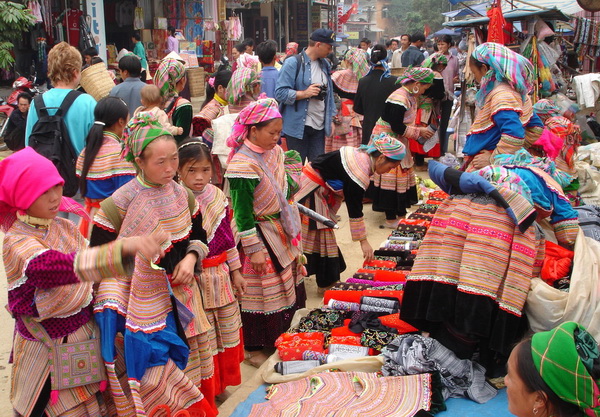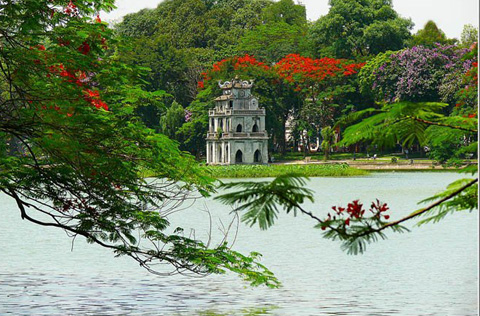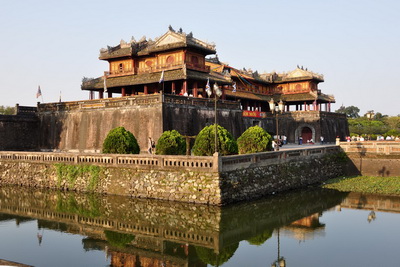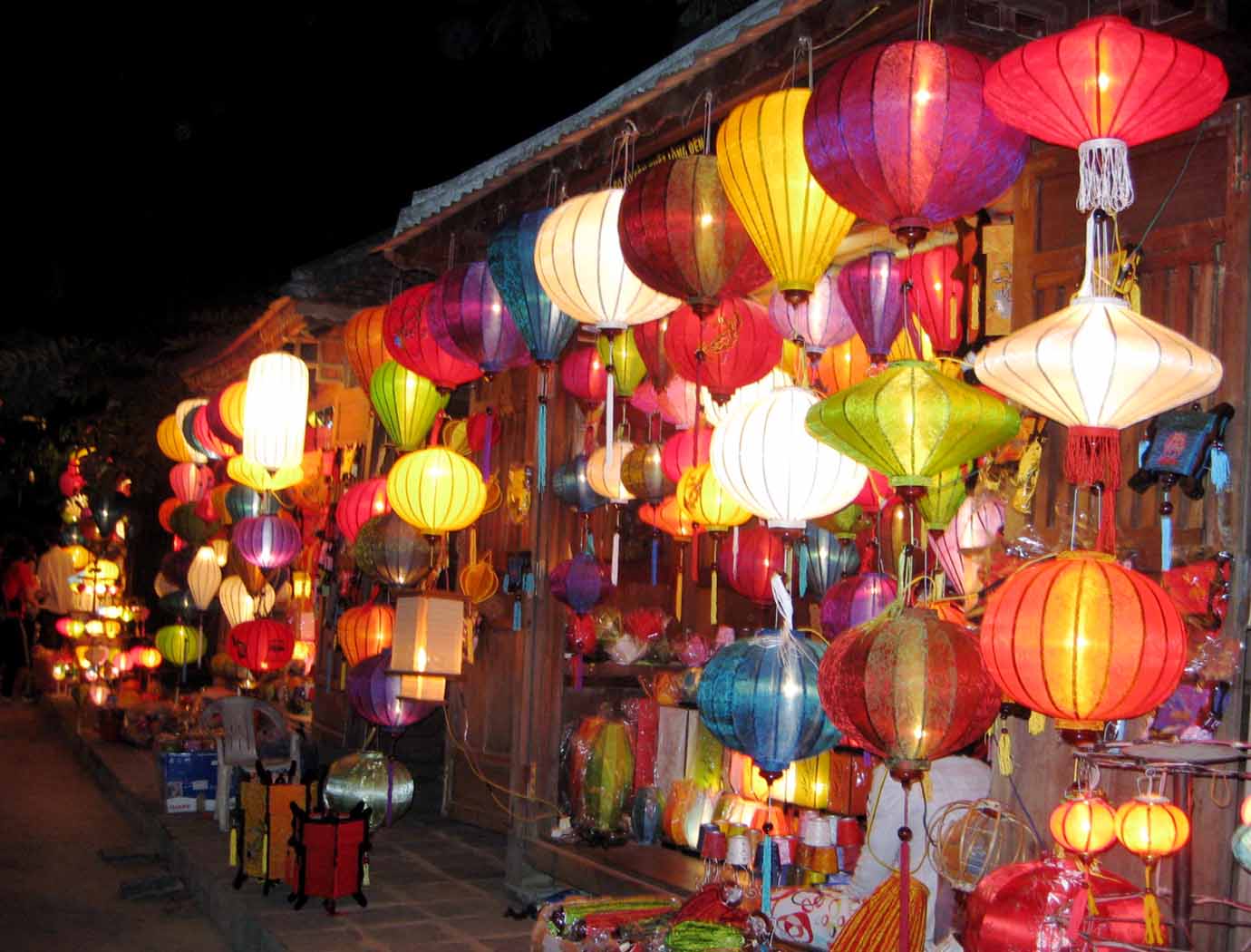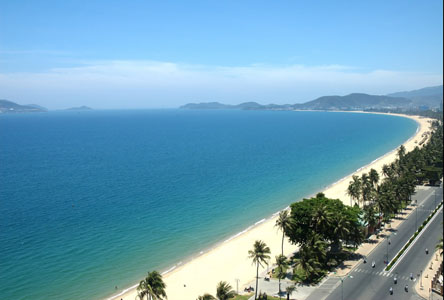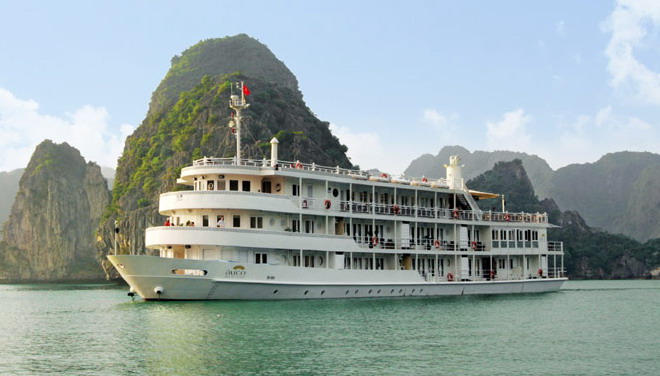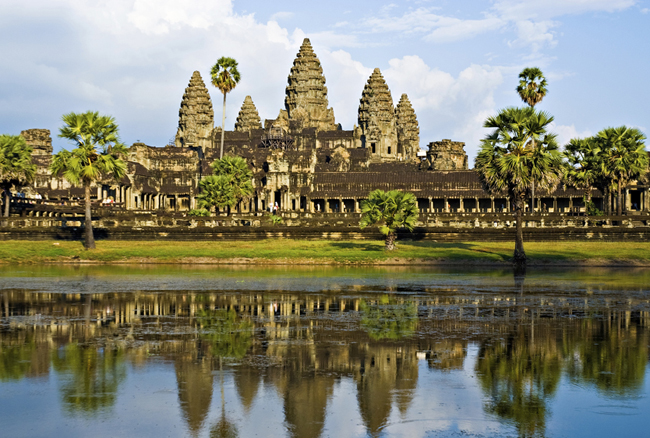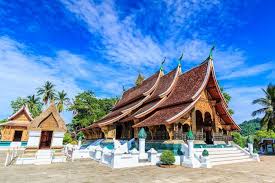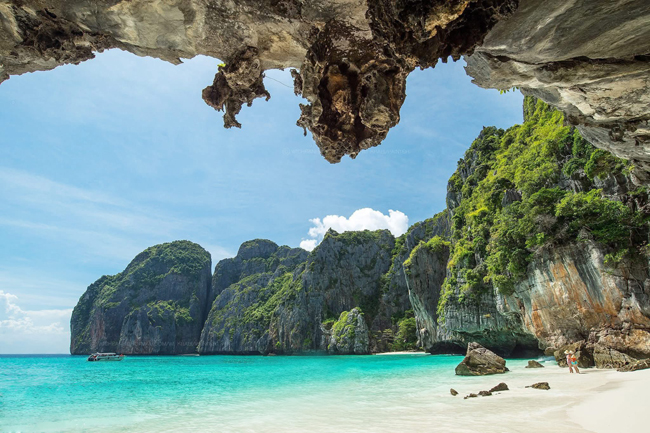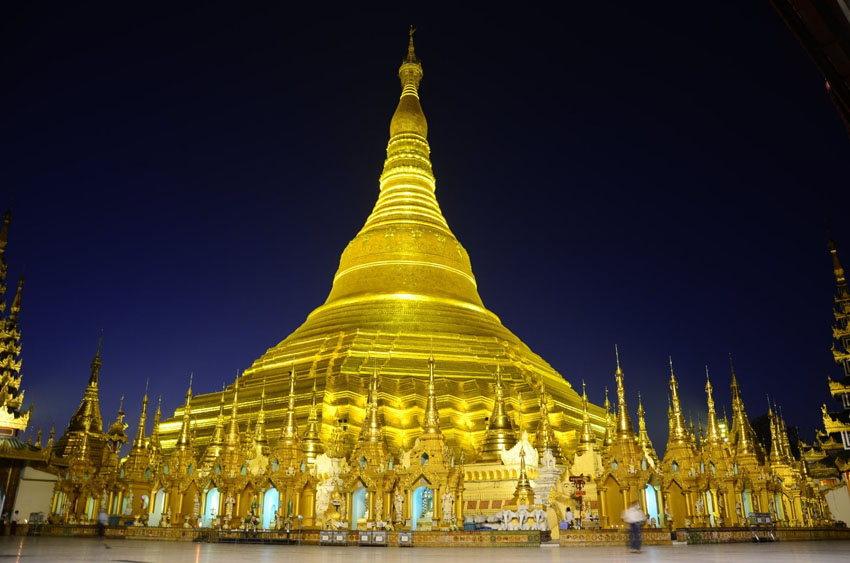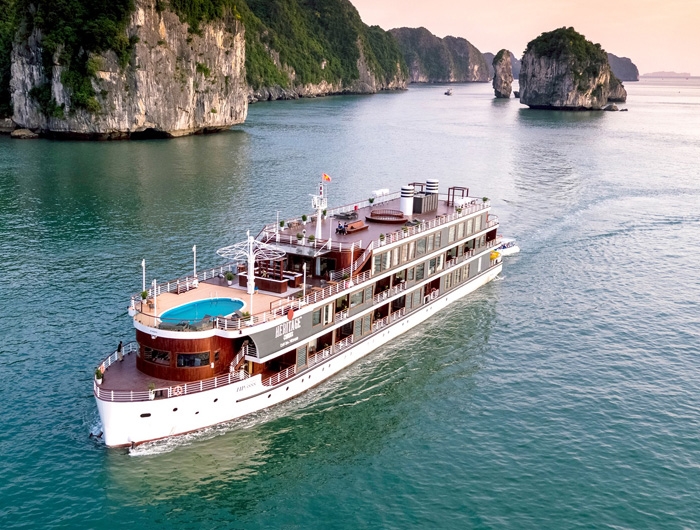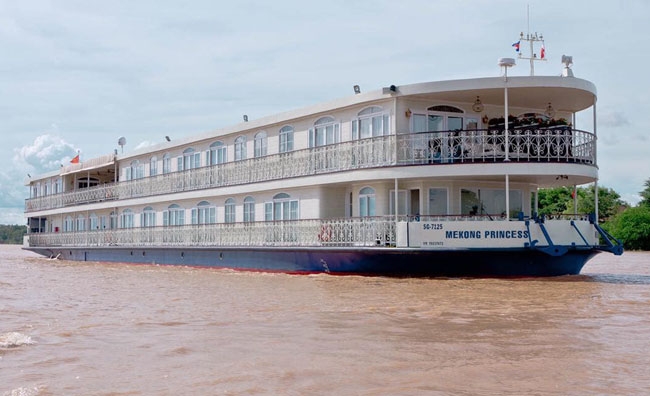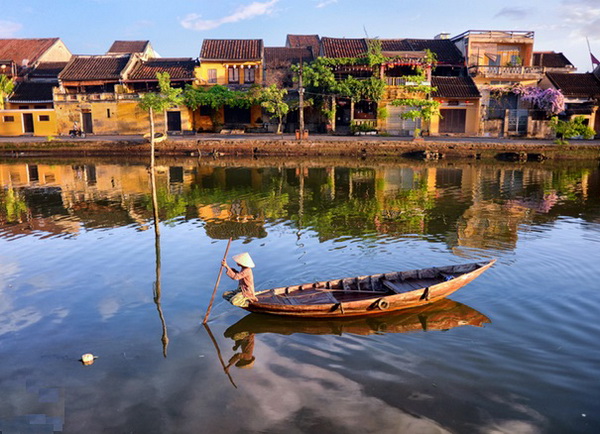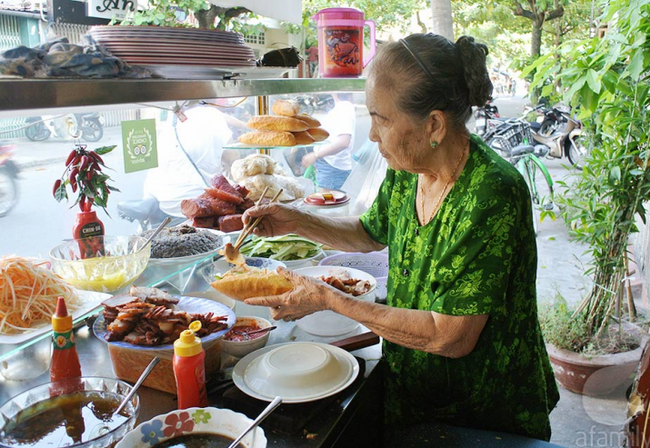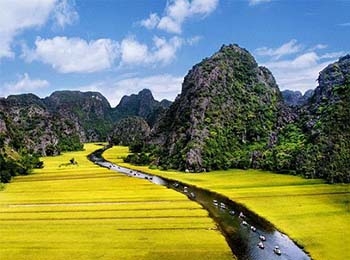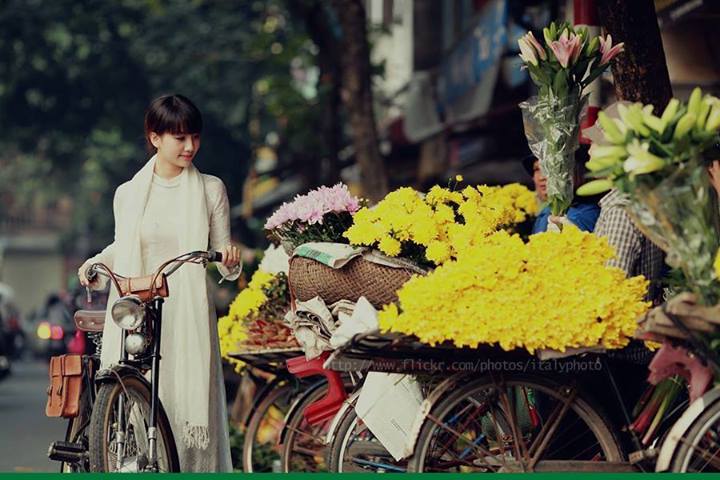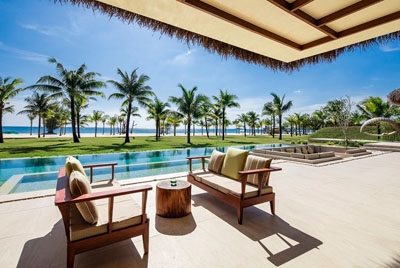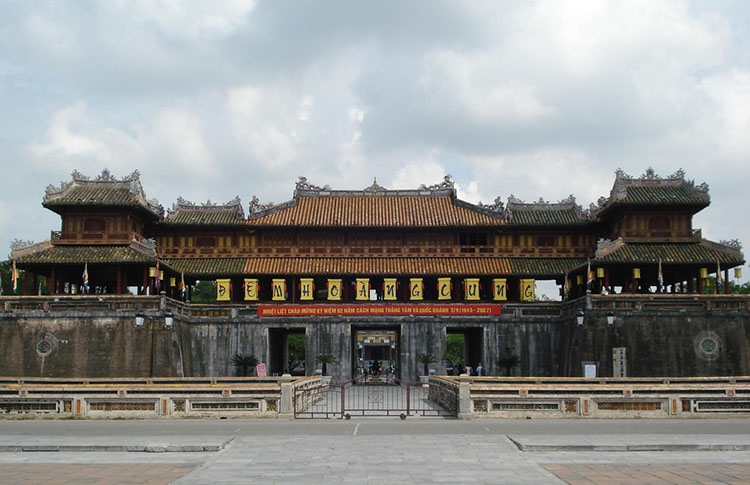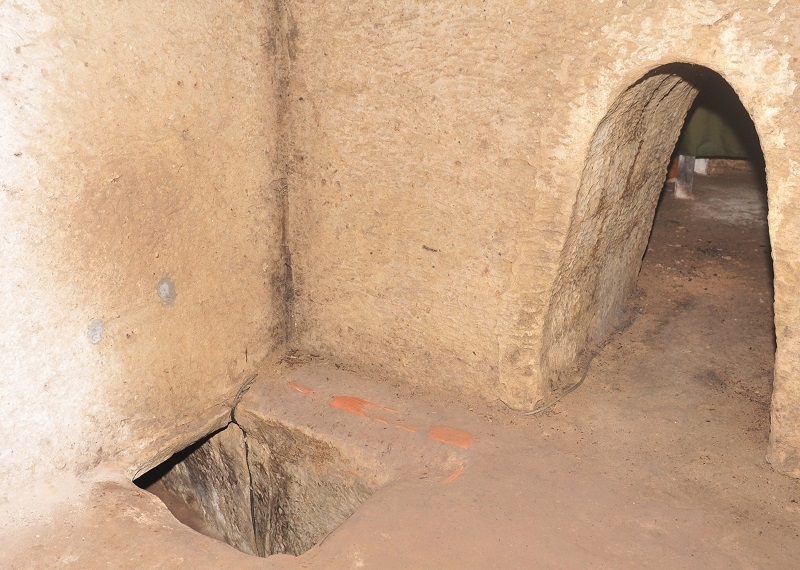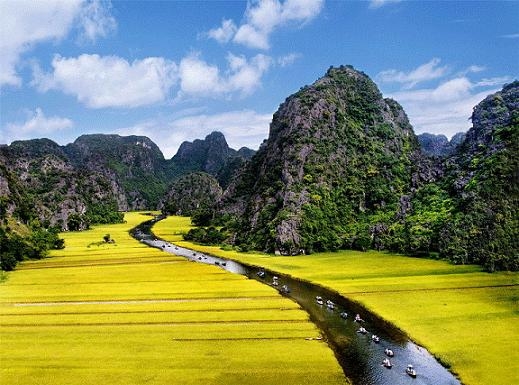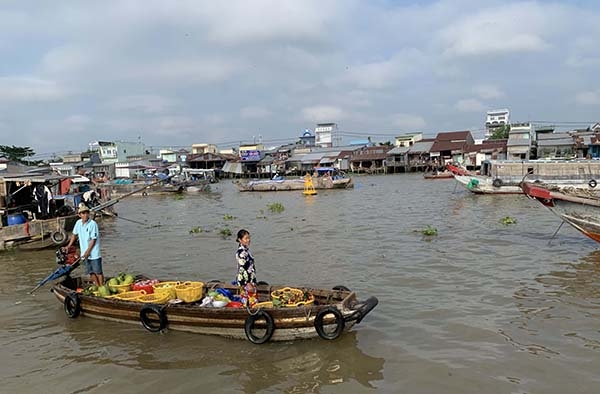Japanese Covered Bridge
Japanese Covered Bridge was built in 1590s by Japanese Businessmen living in Hoi An. It's located in the Center of Hoi An Ancient Town, connecting Tran Phu and Nguyen Thi Minh Khai Street. It's over a small Cannel that runs to Thu Bon River. It's also called Chua Cau or Cau Pagoda. ( Chua mean Pagoda, Cau means Bridge)
Length : 18m
Width : 4,2m
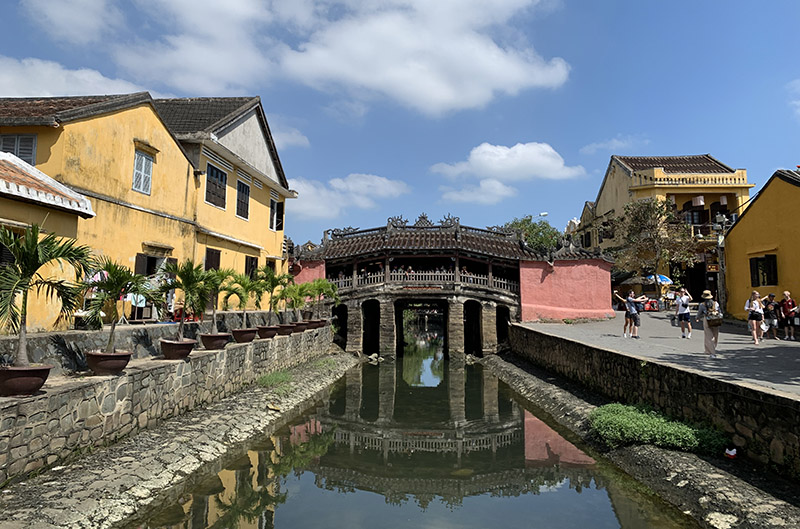
History
According to a Vietnamese researcher named Vu Duc Tan and his writing for the Vietnam Magazine, as well as another foreign author of The Asian Wall Street Journal magazine, the Japanese Covered Bridge had been finished building in 1593. In the Vietnamese ancient bibliography, the Bridge had first appeared in the documents of 1617. In conclusion, we can be assured that the Japanese Covered Bridge had existed in the port of Hoi An town at least from 1617. In 1719 Lord Nguyen Phuc Chu, ruler of Southern Vietnam (Dang Trong) from 1691 to 1725, visited Hoi An. It is said that he personally carved the three Chinese characters over the temple door. These characters translate to "The bridge to receive guests from afar" or "Lai Vien Kieu" in Vietnamese.
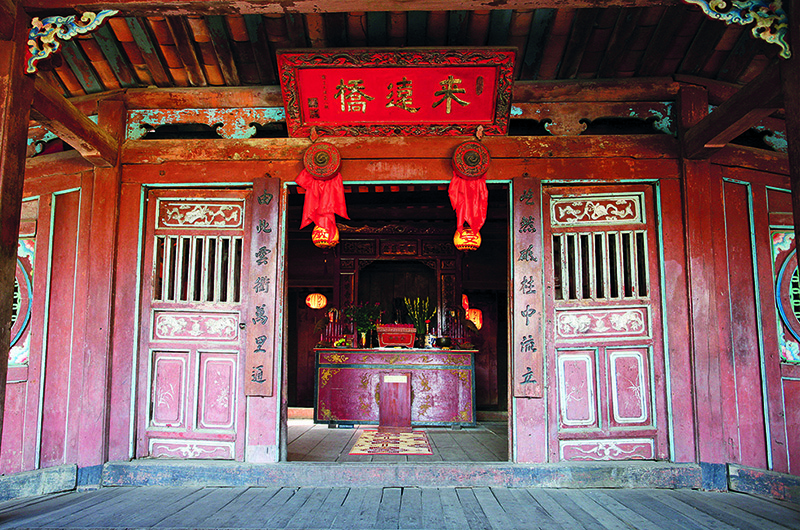
Lai Vien Kieu
According to Japanese Myth, the causing of earthquake is due to a world-spanning fish monster called " Namazu", whose head was in India and its tail in Japan. Only the god Kashima can restrain Namazu and with the help of a heavy capstone he will push the fish against the foundations of earth. However the god sometimes got tired or is distracted from his duty, Namazu will use these moments to wiggle its tail, causing an earthquake in the Japan.
As Vietnam was located in the area of the Namazu's back, the Japanese Covered Bridge was intended to pin The Namazu down, thus preventing any earthquakes. The bridge was to build for this religious purpose.
Renovations
The Japanese Covered Bridge had gone through a total of 8 times being repaired, in 1763, 1815, 1875, 1917, 1962, 1986 ,1996 and 2016. Sometimes, small adjustments were made on the monument’s roof, floor and pillars as well. Recently, the People’s Committee of Quang Nam province is allowing Hoi An to start renovating the Bridge again.
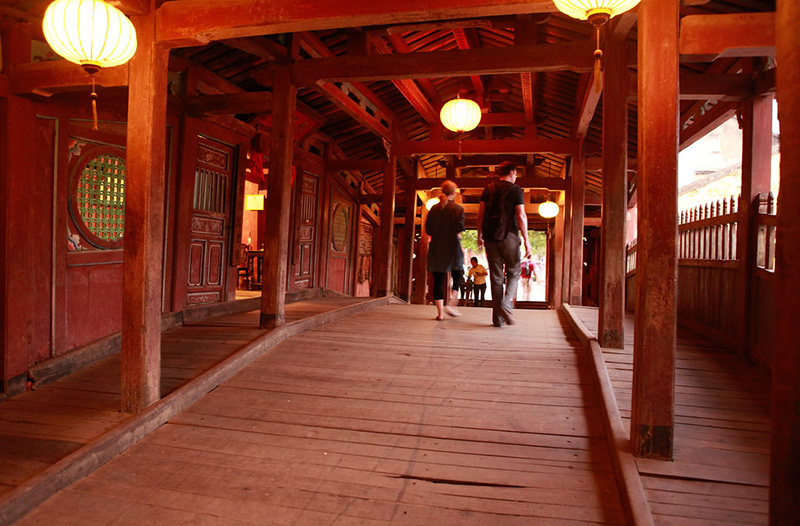
The first renovation in 1763 was done by the leaders of the Minh Huong Commune, which was the village in Hoi An at that time. 52 years later, in 1815, the people in Minh Huong Commune continued to repair and reinforced the Japanese Covered Bridge.
In 1875 was the third time the Japanese Covered Bridge was fixed by the people in Minh Huong Commune, only this time, the process was joined by other businessmen who lived close by.
During the French colonial period, the Vietnamese ancestors proceed to renovate the Bridge again. Especially in 1915, the French Chief of Mission Lesterlin Galtier had used a portion of his treasury for the renovation of the Japanese Covered Bridge. Other funders of the renovation in 1917 were also named on the steles in the monument, which are still available until nowadays.
In 1962, which was about 45 years later, the Japanese Covered Bridge continued to be repaired, this time by the Quang Nam provincial government. Until that time, there had been certain damages and rottings visible in the monument.
Other two renovations in 1986 and 1996 were considered as the two most massive ones. Especially, the restoration in 1986 was carried from August to October of that year, led by the Ministry of Culture, Sports and Tourism and the People’s Committee of Hoi An city. That was when the roof and the floor were fixed into nowadays condition.
In 2016 the Japanese Bridge required urgent renovation. River water had eroded parts of the bridge leaving it particularly vulnerable in typhoon season, as the bridge is in a location that is prone to floods in Hoi An’s Old Town
The newest renovation was from Dec 2022 to July 2024. This was a grand renovation co worked with specialists from Japan. After 19 months of construction, the project has been meticulously completed, achieving the desired results in preserving the architectural, historical, and cultural values of the monument, meeting the expectations of those who cherish this exceptional architectural work
What to see
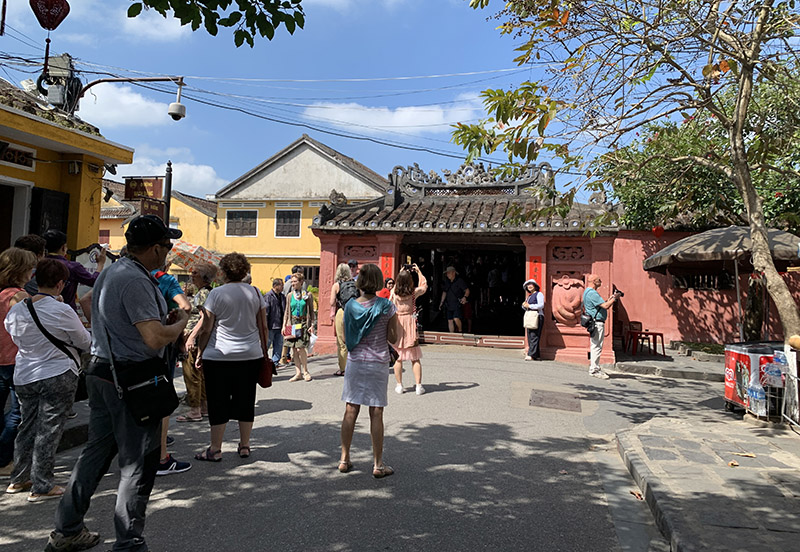
The Bridge is a beautiful example of the Japanese architecture of the period. It is made of wood, approximately 18 meters, with a roof. The Bridge is also decorative and is covered with ornate carvings depicting animals. Above the door of The Japanese Covered Bridge, it carved prominently 3 Chinese characters: “Lai Vien Kieu” (Bridge for passengers by from Afar).
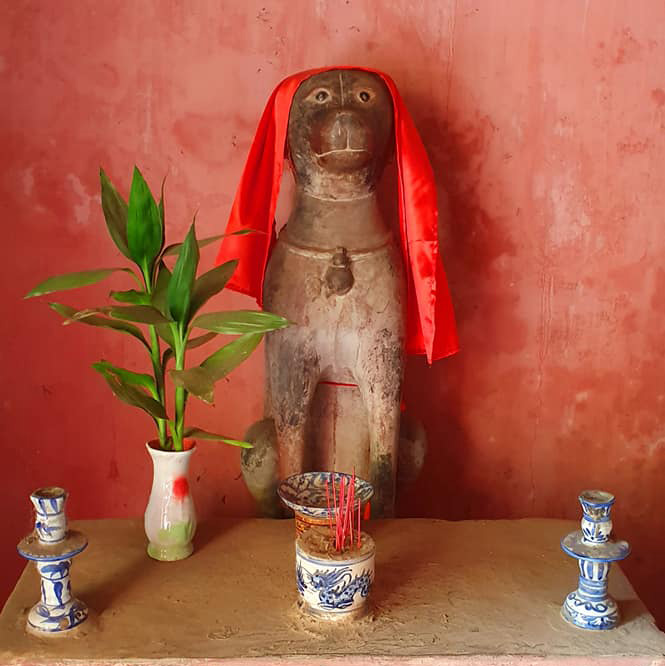
The Dog
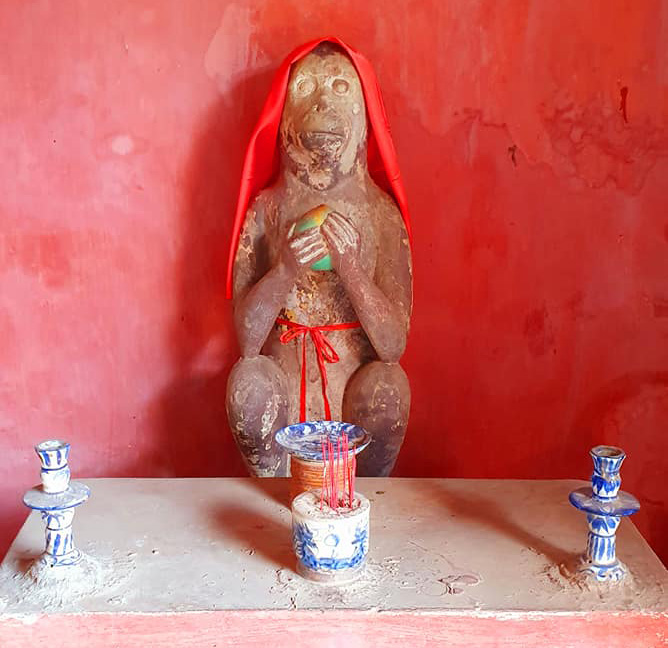
The monkey
The entrances to The Japanese Covered Bridge are guarded by weathered statues: a pair of monkeys on one side, a pair of dogs on the other. These two animals are symbol of holiness in Japanese culture. Another reason behind these animal sculptures is that according to the Asian zodiac signs, many of Japan’s emperors were born in the years of the dog and monkey. Records also say that the construction of the bridge was started in the year of the monkey and was finished in the year of the dog.
Inside the bridge lies a temple of the northern God Tran Vo Bac De, who is considered the God of Weather. People of Hoi An believe that this God controls all kinds of weather changes and natural calamities.
How to get there
It's right in the centre of the Old Town, so you can walk from your hotel or stop over at this place while taking the tour to Hoi An Old Town.
Width : 4,2m

History
According to a Vietnamese researcher named Vu Duc Tan and his writing for the Vietnam Magazine, as well as another foreign author of The Asian Wall Street Journal magazine, the Japanese Covered Bridge had been finished building in 1593. In the Vietnamese ancient bibliography, the Bridge had first appeared in the documents of 1617. In conclusion, we can be assured that the Japanese Covered Bridge had existed in the port of Hoi An town at least from 1617. In 1719 Lord Nguyen Phuc Chu, ruler of Southern Vietnam (Dang Trong) from 1691 to 1725, visited Hoi An. It is said that he personally carved the three Chinese characters over the temple door. These characters translate to "The bridge to receive guests from afar" or "Lai Vien Kieu" in Vietnamese.

Lai Vien Kieu
According to Japanese Myth, the causing of earthquake is due to a world-spanning fish monster called " Namazu", whose head was in India and its tail in Japan. Only the god Kashima can restrain Namazu and with the help of a heavy capstone he will push the fish against the foundations of earth. However the god sometimes got tired or is distracted from his duty, Namazu will use these moments to wiggle its tail, causing an earthquake in the Japan.
As Vietnam was located in the area of the Namazu's back, the Japanese Covered Bridge was intended to pin The Namazu down, thus preventing any earthquakes. The bridge was to build for this religious purpose.
Renovations
The Japanese Covered Bridge had gone through a total of 8 times being repaired, in 1763, 1815, 1875, 1917, 1962, 1986 ,1996 and 2016. Sometimes, small adjustments were made on the monument’s roof, floor and pillars as well. Recently, the People’s Committee of Quang Nam province is allowing Hoi An to start renovating the Bridge again.

The first renovation in 1763 was done by the leaders of the Minh Huong Commune, which was the village in Hoi An at that time. 52 years later, in 1815, the people in Minh Huong Commune continued to repair and reinforced the Japanese Covered Bridge.
In 1875 was the third time the Japanese Covered Bridge was fixed by the people in Minh Huong Commune, only this time, the process was joined by other businessmen who lived close by.
During the French colonial period, the Vietnamese ancestors proceed to renovate the Bridge again. Especially in 1915, the French Chief of Mission Lesterlin Galtier had used a portion of his treasury for the renovation of the Japanese Covered Bridge. Other funders of the renovation in 1917 were also named on the steles in the monument, which are still available until nowadays.
In 1962, which was about 45 years later, the Japanese Covered Bridge continued to be repaired, this time by the Quang Nam provincial government. Until that time, there had been certain damages and rottings visible in the monument.
Other two renovations in 1986 and 1996 were considered as the two most massive ones. Especially, the restoration in 1986 was carried from August to October of that year, led by the Ministry of Culture, Sports and Tourism and the People’s Committee of Hoi An city. That was when the roof and the floor were fixed into nowadays condition.
In 2016 the Japanese Bridge required urgent renovation. River water had eroded parts of the bridge leaving it particularly vulnerable in typhoon season, as the bridge is in a location that is prone to floods in Hoi An’s Old Town
The newest renovation was from Dec 2022 to July 2024. This was a grand renovation co worked with specialists from Japan. After 19 months of construction, the project has been meticulously completed, achieving the desired results in preserving the architectural, historical, and cultural values of the monument, meeting the expectations of those who cherish this exceptional architectural work
What to see

The Bridge is a beautiful example of the Japanese architecture of the period. It is made of wood, approximately 18 meters, with a roof. The Bridge is also decorative and is covered with ornate carvings depicting animals. Above the door of The Japanese Covered Bridge, it carved prominently 3 Chinese characters: “Lai Vien Kieu” (Bridge for passengers by from Afar).

The Dog

The monkey
The entrances to The Japanese Covered Bridge are guarded by weathered statues: a pair of monkeys on one side, a pair of dogs on the other. These two animals are symbol of holiness in Japanese culture. Another reason behind these animal sculptures is that according to the Asian zodiac signs, many of Japan’s emperors were born in the years of the dog and monkey. Records also say that the construction of the bridge was started in the year of the monkey and was finished in the year of the dog.
Inside the bridge lies a temple of the northern God Tran Vo Bac De, who is considered the God of Weather. People of Hoi An believe that this God controls all kinds of weather changes and natural calamities.
How to get there
It's right in the centre of the Old Town, so you can walk from your hotel or stop over at this place while taking the tour to Hoi An Old Town.

